Infectious Diseases and Tropical Medicine
"Look abroad to Nature`s mighty range; Nature`s mighty law is change."
Robert Burns' line elegantly expresses the shifting landscapes of infection. Between 1948 and 2010, Glasgow's infection landscape was transformed more compellingly than in most cities. Thus striking changes were seen in disease patterns, in patient types, and in forms of therapy.
When the NHS began in 1948, Glasgow had four fever hospitals with over 12,000 annual admissions, mainly of children. By 2010, the now single unit in Gartnavel Hospital admitted annually only 1400, exclusively adult, cases. However, this was compensated for by an enormous rise in both day and outpatient cases. Gradual trends are evident in a transition from children to adults, acute to chronic, community to lifestyle, bacterial to viral, untreatable to treatable, and local to imported infections; but lastly, from the service`s physical isolation to one of fully modernized integration.
The specialty now, after its mid-years of decline, is again well established. It is useful to divide these 62 years into three unequal and contrasting periods.
Health revolution
1948–63 Antibiotics, gastroenteritis, polio and virology
The birth of the NHS, at a transition point for new therapies, triggered a flurry of clinical research. The traditional fevers were exacting an appalling mortality, amounting to over 200 deaths in children per year. This was largely due to pneumonia, occurring notably in pertussis (whooping cough), but also in measles. The fruits of antibiotic research greatly reduced this mortality. Investigation of the all-pervasive infantile gastroenteritis spawned innovations in fluid therapy, which also averted many deaths.
In 1948, 70% of cases were admitted by notification, thereby mandating their isolation. Yet the character of the Infectious Diseases Units was changing, and evolving gradually into centres of specialist therapy, as preached so persuasively by Professor Thomas (Tam) Anderson. However, epidemics still posed a genuine threat. This manifested in 1950 as smallpox, in its last and alarming community outbreak in the UK, which led to some 18 cases, 3 staff deaths, and 750,000 people vaccinated. Polio epidemics often triggered panic too, and occurred 4 times from 1950 to 1962.
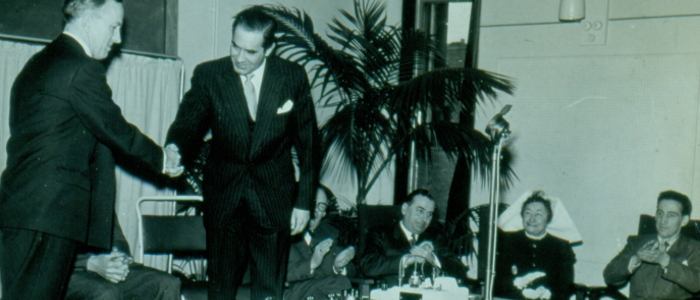
Life-saving ventilation, first used in the massive Copenhagen epidemic in 1952, led, via professional friendships, to the birth of intensive care in Glasgow in 1954 in the Infectious Disease polio wards. Under the direction of Dr Ian Pinkerton, these evolved into ventilation units for generic respiratory failure, such as complicates tetanus or polyneuritis, and indeed non-infective conditions, and remained in use until the late 1970s.
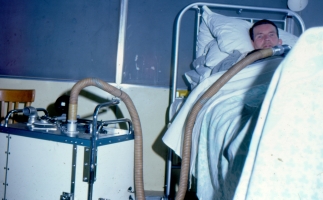
Pneumonia, with over 2,000 admissions per year, was an ongoing focus of research, not least in the influenza season. Myriads of 'fever' admissions helped to elucidate the pattern in Glasgow of various novel viruses. Thus, in 1949, Dr Norman Grist (read more) began a virology service, soon to have a global reputation for studies in diagnosis and epidemiology. By 1963, single cubicle isolation was introduced, whilst the compulsory residency of staff ended. A preponderance in admissions of children changed to one of adults.
Tuberculosis, with about 2,750 cases per year in the 1950s due to poor social conditions, was thus widely prevalent in Glasgow. This burden was greatly reduced by the city's mass miniature radiography (MMR) campaign in 1957, which identified subclinical as well as clinical cases. Successful cure, achieved now by triple drug therapy, also reduced the pool of infectious cases (see Respiratory Medicine). Non-pulmonary cases, about 15% of total, were often admitted to the Infectious Diseases units, and had a much higher mortality rate. This was especially true of the dreaded, and all too common, tuberculous meningitis which, until curative therapy was introduced, had a 100% mortality.
Glasgow graduates researching tropical medicine included Professor Alexander Haddow, who worked in East Africa on Yellow Fever and other insect-borne diseases, leading to the discovery of the Zika virus. Returning to Glasgow in 1965 as Senior Lecturer in Epidemiology, he was appointed Titular Professor of Tropical Medicine in 1970. He was Dean of the Faculty of Medicine (1970-1971) and then Professor of Administrative Medicine (1971-1978).
Downsizing
1964 -93 Legionellosis, new viruses, travel medicine
Success may itself trigger change. As community resilience rose notably through universal immunization - a major achievement of the new NHS - a decline ensued in the specialty, in its activity and its importance. Mortality and severe morbidity, especially in children, tumbled. Now less dangerous, albeit highly infectious, conditions were being progressively admitted.
Cases of bowel infection soared, yet they changed serially such that dysentery, once exceeding 2,000 admissions per year, was superseded first by salmonellosis, then later by campylobacteriosis. This led Dr Peter MacKenzie of Belvidere hospital to declare – inimitably - “This place is not a hospital; it`s a public convenience!”
This place is not a hospital (Belvidere); it`s a public convenience!
He, with the universally popular and respected Dr James H Lawson of Ruchill hospital, were the city's last Infectious Disease Hospital Physician Superintendents, after which both units merged in 1981.
After retirement in 1981, Dr MacKenzie conducted several video interviews with Glasgow doctors and others, accessible at RCPSG and Mitchell Library.
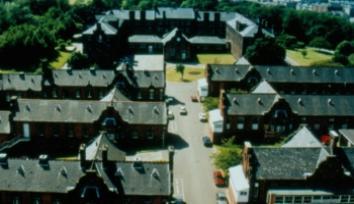
Respiratory admissions spurred various viral studies of croup, bronchiolitis and pneumonia in children, and pneumonia in adults. The outbreak of Legionnaires' pneumonia which afflicted Glaswegians in 1973, was its first known tourist outbreak, due to the first bacterial human pathogen to be discovered since 1918.
As a result, Ruchill hospital acquired a notable national reputation. It triggered research into the various complications of the disease, whilst Dr Ron Fallon established a national diagnostic service for the infection.
Its notoriety prompted a comprehensive survey into the general scale of illness in tourists, by type and degree. Undertaken by the acclaimed Scottish epidemiology centre at Ruchill hospital, now designated as Health Protection (Scotland), it was led by its popular and industrious director Dr Dan Reid. A highly-regarded travel advice service, one of the very first, which was established by Dr Eric Walker, was a further sequel, which was mediated by phone or online, as well as by busy pre-and post-travel clinics.
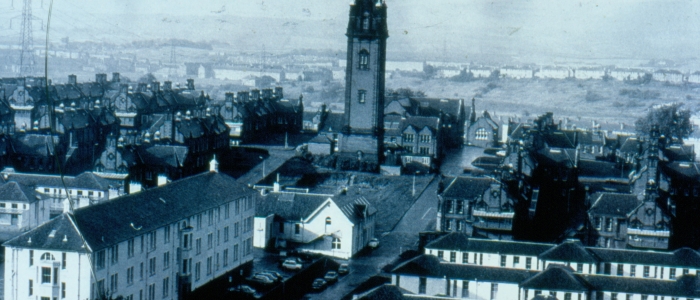
Renaissance
1994 - 2010 New diseases, advances, staffing and unit site
Adversity may set in train profound change too. The isolated setting of Ruchill hospital, its declining role and support in the 1990s, increasingly compelled the search for a radical solution. This arose initially by chance, with the advent of newly emerging diseases; then by intent in 1997, with the move of the service, slowly being modernized, to the new Brownlee Centre at Gartnavel General hospital. In the 1980s, the rise of blood-borne viruses was linked to several alternative lifestyles (such as multiple sexual partners, and injecting drug use with shared needles). This era posed novel challenges for the Infectious Disease staff, equally in clinical and psycho-social terms.
The spectre of Acquired Immune Deficiency Syndrome (due to the Human Immunodeficiency Virus, HIV), mercurial and changeable like a genie escaping the bottle, had a profound impact on the ID service from 1984 onwards. Patients faced multiple, sometimes gruesome, ordeals from their diagnosis up till their death, the latter being often slow or 'stutterin' in tempo. Their physicians faced challenges too, sometimes of a bizarre nature beyond their clinical experience. This was a steep, at times painful, learning curve for Drs Dermot H. Kennedy and W Campbell Love, who co-ordinated Ruchill`s response.
Support extended beyond the hospital to cater for all stages of progression, with a focus which entrenched prevention. This service was directed from Ruchill with vigour by Dr Laurence Gruer, the public health physician for both HIV infection and drug misuse. From 1987, and in the face of much public opposition, he developed a successful city-wide needle-exchange service which played a key role in stemming the spread of HIV among heroin injectors. In 1994, he launched a pioneering scheme with a remit for harm minimization, not least from potentially fatal infections: accredited general practitioners prescribed methadone to heroin addicts who consumed it under the daily supervision of community pharmacists. This was supported by the new Glasgow Drug Problem Service, ably directed by Dr Robert Scott.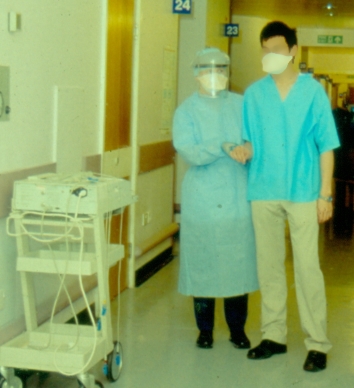
Given the despair a diagnosis of HIV infection once induced, the dramatic shift in 1996 with the emergence of combination therapy which could assure an almost normal life expectancy, is beyond the imagining of early patients and pioneers. Whilst immunization largely aborted an unfolding epidemic of Hepatitis B, the scale of hepatitis C has, by contrast, grown hugely. Now a curable infection, this major service has been energetically fronted by Dr Raymond Fox.
The outpatient parenteral antibiotic facility, pioneered by Dr Andrew Seaton, has released many general hospital beds; whilst his antibiotic advisory role helps to mitigate levels of bacterial drug resistance in the city.
In respect of the service`s contemporary activity, such traditional fare as gastrointestinal, respiratory and soft tissue infections still comprise over 50% of cases. Cases of pulmonary tuberculosis have been increasingly admitted, given the availability of cubicles in the unit with negative-pressure ventilation, and with the increasing threat of drug resistant disease. In 2008, the UK`s first case of extended resistance (near incurable) disease was admitted to the Brownlee.
With 10% of admissions currently travel-related, the focus on geographical medicine has expanded under Dr Alisdair MacConnachie. These cases typically generate much fascination, and whilst they rarely pose a major hazard to staff, all undiagnosed fevers from abroad must be assessed scrupulously, especially those from Africa and other tropical regions. The in-patient unit has recently been transferred again, and is now well-integrated into the Queen Elizabeth University hospital, one of Europe`s most modern complexes. The Infectious Disease service, which continues to grow in scale and comprehensiveness, seems to face a decidedly optimistic future.
Academic and related matters – staff, publications, courses
Dr Thomas (Tam) Anderson became Reader in the UK's first academic department of Infectious Disease in Ruchill hospital in 1951, acquiring the UK's first Infectious Disease Professorship in 1959. In addition to antibiotic research, he spent his career deliberating over, and proselytising about, the modern role of the Infectious Disease service. He became the Henry Meechan Professor of Public Health (1964-1971).
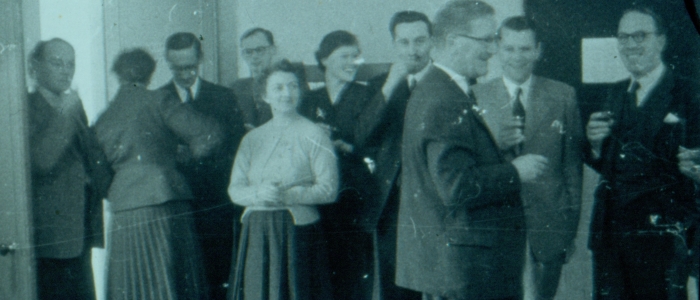
He was succeeded as Professor of Infectious Diseases (1965-1983) by Norman R. Grist, a virologist of world repute, especially in respiratory viruses, and the role of enteroviruses in CNS and cardiac diseases. The Professorship was not replaced after his retirement in 1983. His Senior Lecturer, C. Richard Madeley, was an expert electron-microscopist who was first to discover the two stool pathogens astro- and calici-viruses, whilst Dr James F Boyd had a unique career in Infectious Disease pathology.
In 2003, Dr Tom Evans took up a new chair in Molecular Microbiology, to research the immune response to bacterial infection.
The Infectious Disease staff have published regularly, with – albeit a historical sample - some 471 papers between 1951-75, of which 200 were in the Lancet or British Medical Journal. Ruchill hospital medical staff have also conducted many annual courses which attracted international participants, and these have included Diagnostic Virology, the Epidemiology of Infectious Diseases, and Travel Medicine. Many staff have served on government, Medical Research Council, national and international committees which have produced policy-changing reports.
Dr Dermot H. Kennedy
Images provided by Dr Kennedy

